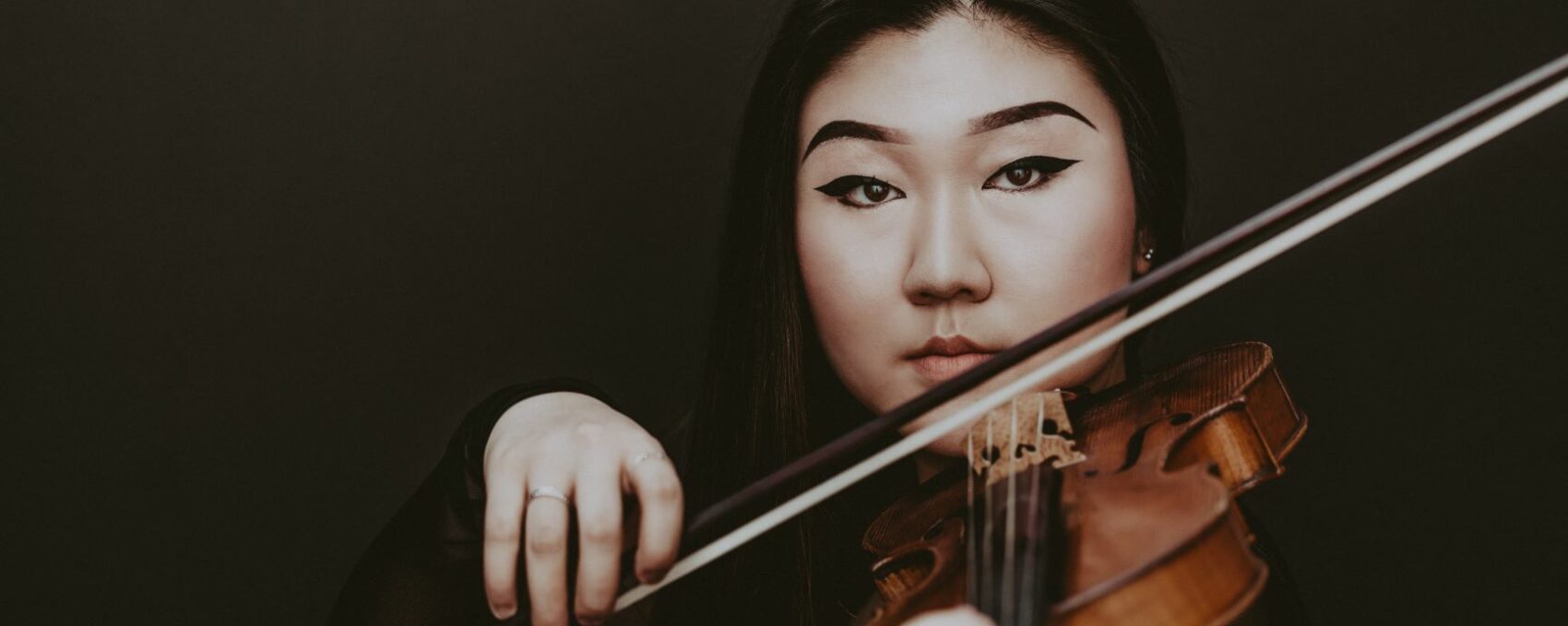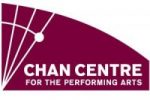Chan Centre for the Performing Arts
Chloe Kim, Violin; Pacific Baroque Orchestra; Alexander Weimann, Music Director
The history of European music has been shaped by the uprooting and travels of artists seeking work, fame, knowledge, or financial stability. In this programme, we tell the stories of Italian composers Geminiani, Brescianello, Locatelli, and Corelli who left home to seek a better future. This concert will showcase the virtuosic brilliance of violinist Chloe Kim, named as one of Canada’s top 30 under 30 by CBC last year when she was just 23-years-old.
This concert is generously supported by an anonymous donor
Programme
FRANCESCO GEMINIANI (1687-1762)
Concerto grosso in g minor H 74; Op. 3 No. 2
Largo e Staccato
Allegro
Adagio
Allegro
PIETRO ANTONIO LOCATELLI (1695-1764)
IL PIANTO D’ARIANNA
Concerto à quattro for strings and basso continuo in E flat major Op. 7 n. 6
Andante, allegro, adagio, andante, allegro
Largo
Largo andante
Grave
ARCANGELO CORELLI (1653-1713)
Sonata for violin and basso continuo Op.5 No. 12:
23 Variations on the theme La Follia
GIUSEPPE ANTONIO BRESCIANELLO (ca.1690 — 1758)
Chaconne for 2 Violins, 2 Violas and basso continuo in A major
Programme Notes
The most influential Italian composer of the seventeenth century was far and away Arcangelo Corelli. His music remained a model for composers in all of Western Europe long after his passing. All of the composers on this programme were indebted to him. Francesco Geminiani studied with Corelli directly. His works show an undoubted influence of Corelli’s. The concerto grosso on this programme follows Corelli’s typical model of the sonata da chiesa:4 movements alternating tempo in the order of slow-fast-slow-fast. Geminiani was a true prophet of Corelli’s style when he immigrated to England in 1714. The set of concerti grossi, op.3, do diverge from Corelli’s traditional methods, since Corelli’s practise was to include a concertino—or a group of soloists—in the form of a trio of two violins and continuo, along with a group of musicians who backed up the ensemble consisting of two violins, viola, and a larger continuo ensemble. Geminiani, however, scored his concerti for 4 soloists consisting of the full complement of strings (resembling a modern string quartet), which includes viola, while the backup orchestra only consists of two violin parts and continuo. This results in a different texture than Corelli’s concerti.
While he did not study with Corelli, Pietro Antonio Locatelli’s music is nevertheless influenced by the older composer’s work. In terms of form, Locatelli’s music follows Corelli’s model. However, Corelli famously took offence to Handel playing the F above the treble clef staff in his presence, but Locatelli pushed the limits of violin technique to limits far exceeding Corelli’s model. The concerto on this programme has a first movement that resembles Corelli’s highly varied movements with vivid contrasting sections. The violin writing far exceeds what Corelli would have written, thus exceeding his model, since he never moved beyond third position (the maximum note is D above the staff—E if one extends). The music also has a very vocal quality, almost in a recitative-like fashion modeled after opera. Corelli left us no vocal music, unlike Locatelli, so the latter’s style of instrumental writing had greater influence from vocal procedures. The programmatic title of this piece refers to Ariadne’s tears over her loss of her lover Theseus. That accounts for the highly dramatic progression of the composition, and the story would have been familiar to audiences at the time given the many modern translations of Ovid’s Metamorphoses into the vernacular. The work was written in Amsterdam in 1741, another occasion of a disciple of Corelli’s musical style being delivered to another nation.
Corelli’s work on this programme has a long heritage. The follia is a harmonic pattern that has roots in the early seventeenth century, and many composers later set variations on it. Likely originating from Portugal, the dance’s bass became stereotyped and created a foundation for composers to build on. The variations inevitably become progressively wilder as the piece carries on, and Corelli’s version is no exception.
Guiseppe Brescianello hailed from Balogna. He acquired a court position in Stuttgart, under the patron of Maximillian II Emanuel, who was a magnificent patron of all arts. Brescienello had a unique position under Emanuel for composing in both the Italian and French baroque styles. Though he was Italian by birth, his chaccone on this programme is indebted to French models. The chaconne is a virtuosic dance, reserved for only the best dancers. In operas, our few surviving sources of dance notation from the period suggest that it often featured a highly skilled solo male. Like the follia, it originated from foreign models, but the French assimilated it into a stylized version of its antecedents. It follows a harmonic pattern, though not the same one every time, in contrast to the follia that always has the same chord structure. The continuous cycle of chords creates an obsessive sort of effect on the listener, as they become absorbed in its seemingly never-ending progression. Jean-Baptiste Lully, in fact, who was the epitome of the French baroque style, used it as a centerpiece of his operas, often as the point of marriage of the moment of passion of his main characters. Passion indeed is the affect of the chaconne as a genre, and Brescianello’s example fulfills that role well.
- Justin Henderlight
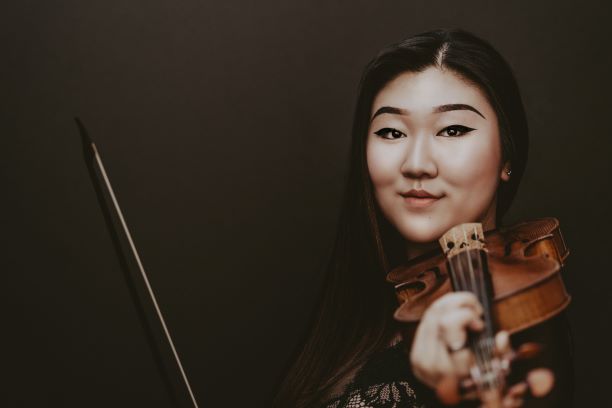
Chloe Kim, Violin
Canadian violinist Chloe Kim has performed as soloist and concertmaster in prominent concert venues around the world, sharing the stage with internationally celebrated figures such as Rachel Podger, Masaaki Suzuki, Pablo Heras-Casado, and Richard Egarr. The recipient of the 2020 Mercury-Juilliard Fellowship, the 2016 Early Music America Scholarship, as well as a full-tuition scholarship to The Juilliard School, Chloe was most recently nominated for Canada’s prestigious Sylva Gelber Music Foundation Award.
Chloe’s most memorable engagements include a Vivaldi women’s tour led by the inspirational Monica Huggett, as well as two recent trips to France for collaborations with William Christie and Les Arts Florissants. In the summer of 2019, Chloe performed across Scandinavia with Yale’s Schola Cantorum and served as concertmaster of Juilliard415 for several sold-out productions of Purcell’s Dido and Aeneas, directed by Avi Stein in London’s Holland Park and the Royal Opera in the Palace of Versailles.
With her European tour engagements cancelled due to the pandemic, Chloe pivoted to create, direct, and produce Victoria’s hugely successful Music for the Pause series, presented with her beloved West Coast colleagues. Recent highlights include features in the CBC’s 30 under 30 and the Juilliard Journal for her achievements. This season, Chloe is looking forward to solo appearances with Music on Main and Early Music Vancouver, San Francisco’s Voices of Music, as well as a concerto debut with the National Arts Center Orchestra in Ottawa. She is especially indebted to her dear friends and mentors Elizabeth Blumenstock, Jeanne Lamon, Christina Mahler, and Heilwig von Königslöw.
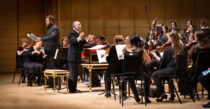
Pacific Baroque Orchestra
The ‘house band’ of Early Music Vancouver, The Pacific Baroque Orchestra (PBO) is recognized as one of Canada’s most exciting and innovative ensembles performing “early music for modern ears.” Formed in 1990, the orchestra quickly established itself as a force in Vancouver’s burgeoning music scene with the ongoing support of Early Music Vancouver. In 2009, PBO welcomed Alexander Weimann as Director. His imaginative programming, creativity and engaging musicianship have carved out a unique and vital place in the cultural landscape of Vancouver.
PBO regularly joins forces with internationally-celebrated Canadian guest artists, providing performance opportunities for Canadian musicians while exposing West Coast audiences to a spectacular variety of talent. The Orchestra has also toured throughout BC, the northern United States, and across Canada. Their 2019 East Coast Canadian tour with Canadian soprano Karina Gauvin culminated in a critically acclaimed album, Nuit Blanches, released by Atma Classique.
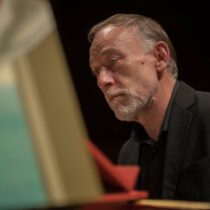
Alexander Weimann, Music Director
Alexander Weimann is one of the most sought-after ensemble directors, soloists, and chamber music partners of his generation. After travelling the world with ensembles such as Tragicomedia, Cantus Cölln, the Freiburger Barockorchester, Gesualdo Consort and Tafelmusik, he now focuses on his activities as Music Director of the Pacific Baroque Orchestra in Vancouver, Music Director of the Seattle Baroque Orchestra, and regular guest conductor of ensembles including the Victoria Symphony, Symphony Nova Scotia, Arion Baroque Orchestra in Montreal and the Portland Baroque Orchestra.
Alex was born in Munich, where he studied the organ, church music, musicology (with a summa con laude thesis on Bach’s secco recitatives), theatre, mediæval Latin, and jazz piano, supported by a variety of federal scholarships. From 1990 to 1995, he taught music theory, improvisation, and Jazz at the Munich Musikhochschule. Since 1998, he has been giving master classes in harpsichord and historical performance practice at institutions such as Lunds University in Malmö, the Bremen Musikhochschule, the University of California (Berkeley), Dartmouth College (New Hampshire), McGill University, Université de Montréal, and Mount Allison (New Brunswick). He now teaches at the University of British Columbia and directs the Baroque Orchestra Mentorship Programme there. He has received several JUNO and GRAMMY Award nominations – most recently, for the album Nuit Blanches with the Pacific Baroque Orchestra and Karina Gauvin.

